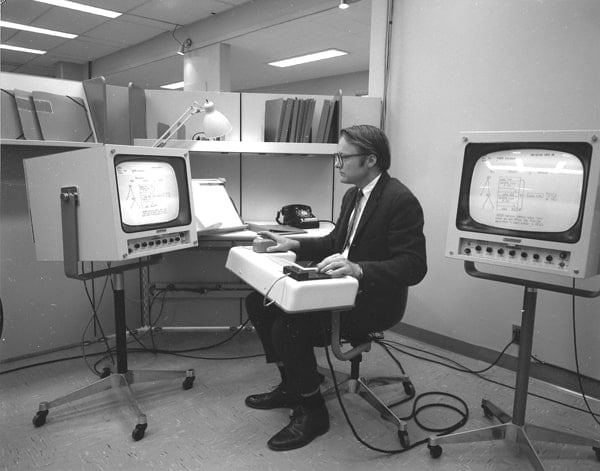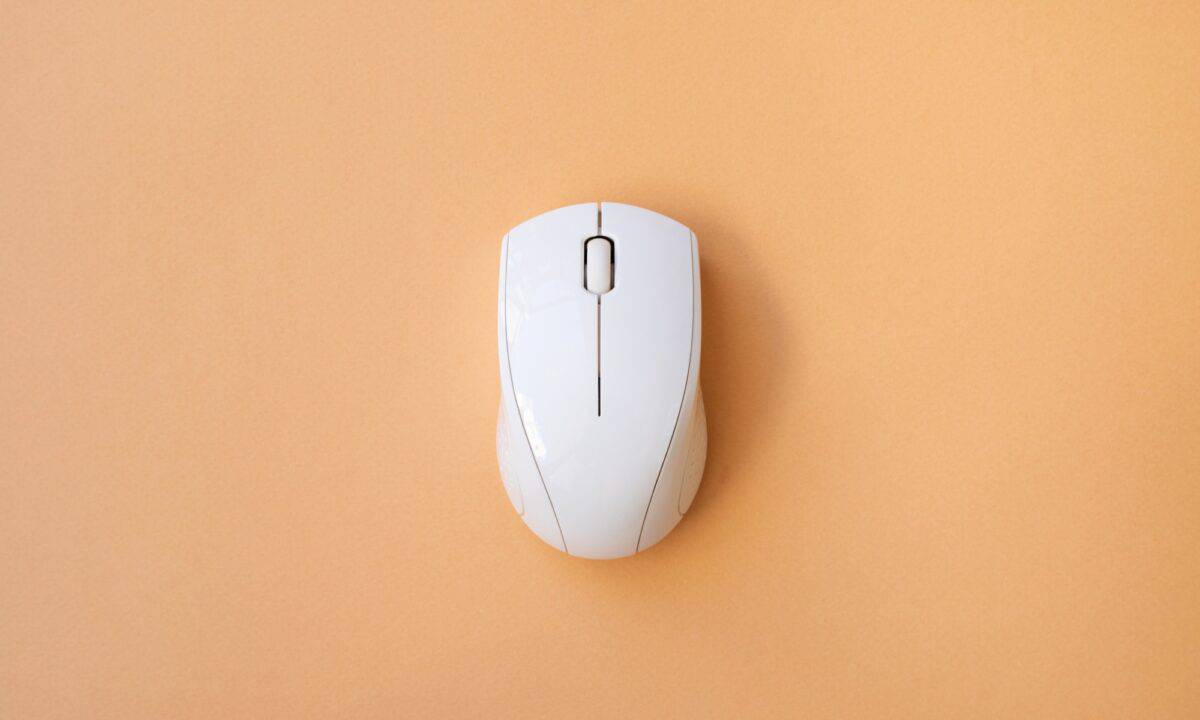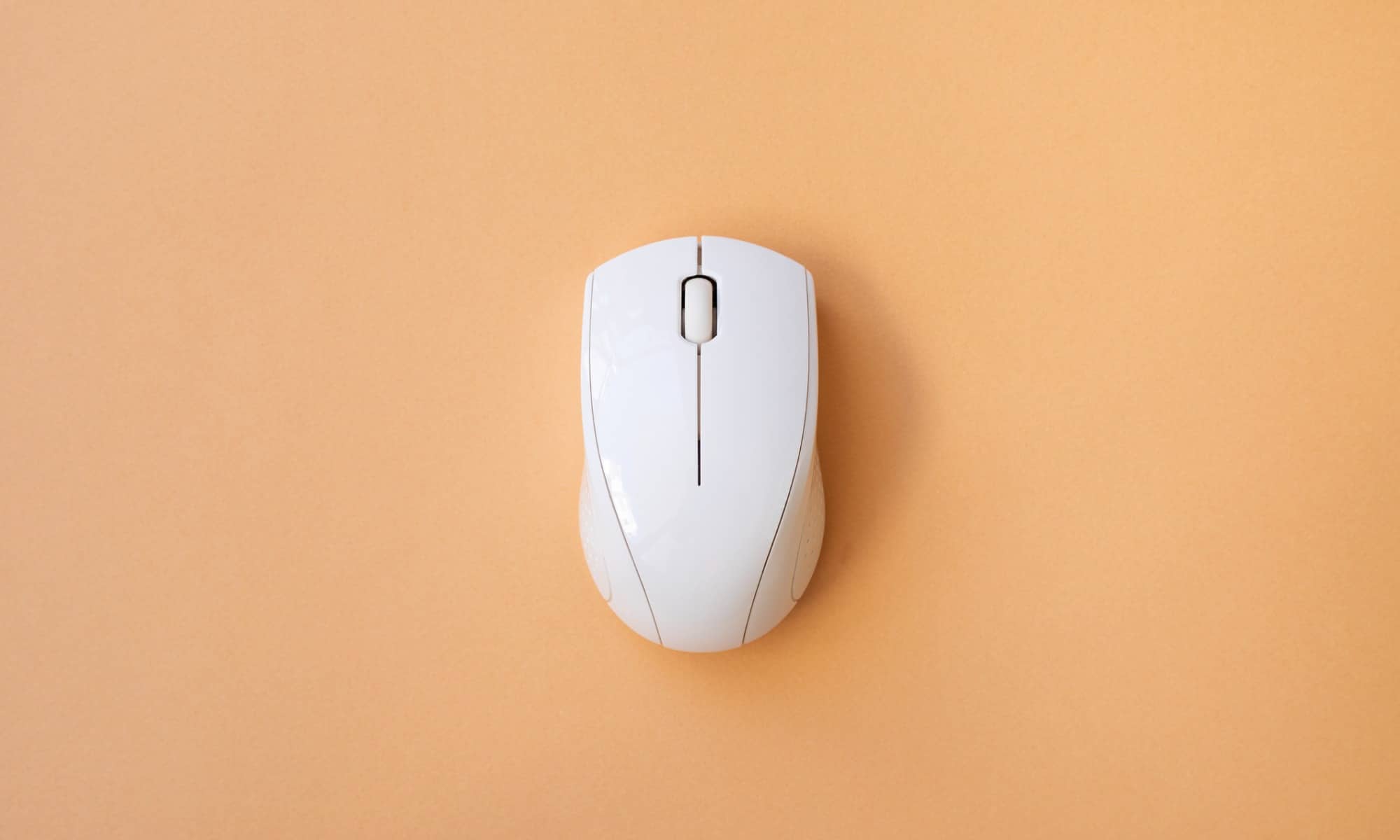
Douglas Engelbart in 1984, showing the first mouse and a new one.
©History-Computer.com
Four Facts About the Computer Mouse
- Douglas Engelbart and Bill English named their first prototype after the rodent due to its shape. The name computer “mouse” has been used ever since the first prototype.
- The primary inventor of the mouse, Doug Engelbart, never received any royalties because the patent was held by the Stanford Research Institute.
- Engelbart stated that the plural of the computer mouse is “mice” but many dictionaries also accept “mouses.”
- In early 1967, Engelbart and English considered using a “knee-control” device that appeared promising. That device was based on Engelbart’s observation that the human foot was a pretty sensitive controller of the gas pedal in cars.
The Computer Mouse History

©This file comes from Science Museum Collections, a website operated by Science Museum Group, a non-departmental public body in the UK. This tag does not indicate the copyright status of the attached work. A normal copyright tag is still required. See Commons:Licensing., CC BY 4.0 <https://creativecommons.org/licenses/by/4.0>, via Wikimedia Commons – Original / License
The first computer mouse was conceived in the early 1960s by Douglas Engelbart. At the time, he was the director of the Augmentation Research Center (ARC) at Stanford Research Institute (SRI), in Menlo Park, California. The mouse was just a tiny piece of a much larger project, started in 1962, aimed at augmenting human intellect. At the time of the invention of the mouse, Engelbart had already been exploring possible ways for people to increase their capability to solve complex problems for almost a dozen years. After Engelbart got the idea, he hired Bill English, who had been working in another lab at SRI, to make the hardware design. Later on, the group was joined by Jeff Rulifson, who made a big difference in the quality of the software involved.
Doug Engelbart and William (Bill) English envisioned problem-solvers using computer-aided working stations to augment their efforts. They required the ability to interact with information displays using some sort of device to move a cursor around the screen. There were several types of devices then in use or being considered for use: the light pen, joysticks, etc. Engelbart and English, however, were looking for the best and the most efficient device. In 1964, the first prototype of a computer mouse was made to use with a graphical user interface (GUI), “windows.”
Quick Facts
- Created
- 1964
- Creator
- Douglas Engelbart, Bill English
- Original Use
- Interact with graphical user interface
- Cost
- ~$300
They approached NASA in 1966, and with NASA funding, the team developed types of tasks and timed a group of volunteers in doing those tasks with the various devices. For example, the computer would generate an object in a random position on the screen and a cursor somewhere else. They timed how long it took the users to move the cursor to the object. It quickly became clear that the mouse out-performed all the others. Devices like the light pen simply took too much time, by repeatedly requiring the user to pick up the pointer and reach all the way to the screen, which was very tiresome.
The Engelbart mouse, which used two discs to indicate an X-Y position and only one button, was difficult to use. These facts led Bill English to introduce the first ball mouse in 1972.
The Computer Mouse: How It Worked

Doug Engelbart’s first mouse.
©History-Computer.com
The original mouse had the cord in the front, but they quickly moved it to the back end to get it out of the way. It was a simple mechanical device with two perpendicularly mounted discs on the bottom. You could tilt or rock the mouse to draw perfectly straight horizontal or vertical lines.
Engelbart applied for a patent in 1967 and received it in 1970 as an assignor of SRI for the wooden shell with two metal wheels. He created the device to function as an X-Y position indicator for a display system. “It was nicknamed the mouse because the tail came out the end,” Engelbart revealed about his invention. His version of windows and GUI was not considered patentable (no types of software were issued patents at that time), but Engelbart had over 45 other patents to his name at the end of his career.

The first production workstation and mouse.
©History-Computer.com
The two metal discs could control the X-Y position but had limited practical uses. These wheels could only move on particular surfaces, so the design was improved by Bill English with the first ball mouse. The basic computer mouse design was further improved by Apple as part of its evolution to modern-day designs.
The Computer Mouse: Historical Significance

Bill English, Engelbart’s lead engineer, testing the first mouse and keypad.
©SRI International, CC BY-SA 3.0, via Wikimedia Commons – Original / License
The first production workstation and mouse were made in 1967. The mouse, as well as other advanced technologies, were demonstrated by Douglas Engelbart in the famous demonstration of experimental computer technologies on December 9th, 1968. Known as “The Mother of All Demos,” Engelbart featured the introduction of the computer mouse, video conferencing, teleconferencing, email, hypertext, word processing, hypermedia, object addressing and dynamic file linking, bootstrapping, and a collaborative real-time editor.
Engelbart, the inventor of one of the most popular computer interface devices ever, didn’t receive any royalties for inventing the first computer mouse or any other evolution of this invention.

©iStock.com/Hazal Ak
The first cordless mouse was shipped in September 1984 with the Metaphor computer of David Liddle and Donald Massaro, former Xerox PARC engineers. The computer also had a cordless keyboard and function keypad for various uses.
The mouse was built for Metaphor by Logitech and used infrared (IR) signals to transmit mouse data to the computer. The problem with such devices that used IR technology was that, in order to work, they needed a clear line of sight between the mouse and the computer’s receiver. This became a problem on a cluttered desk. Cordless mice did not get traction until this problem was solved. This was accomplished by replacing IR with radio frequency (RF) communications.
The First Commercial Mouse
April 27, 2021 marked the 40th birthday of the first commercial computer mouse. On April 27, 1981, this mouse was sold as an accessory to a computer that was really far to expensive for any average Joe to own. The computer was Xerox Star, or the 8010 Information System. A stand-alone model with the software cost a whopping $16,500, which is close to $50,000 if you think of it in today’s market. What was even worse was that the computers were designed to function in a network, so the cost would have been even greater.
While the Xerox Star was a commercial flop, the mouse lived on, subsequently accompanying MacIntosh computers, as well as Apple’s Lisa computer. Until this point, the mouse had only been an experimental device. Though the Xerox Star, as a package, didn’t impress, it did demonstrate the mouse as a valuable asset that could be sold to the public. And the rest, as they say, is history.
Up Next…
- Mechanical Calculators Explained — Everything You Need To Know The calculator was an invention that revolutionized arithmetic. Learn about the mechanics of it.
- The 6 Largest Computer Monitors You Can Buy Today If the size of a computer monitor is important to you, check out the 6 largest models you can purchase on the market.
- Steam Man of Zadoc Dederick Explained — Everything You Need To Know Learn about one of the earliest examples of a robot that operated on steam.
The image featured at the top of this post is ©iStock.com/Hazal Ak.







